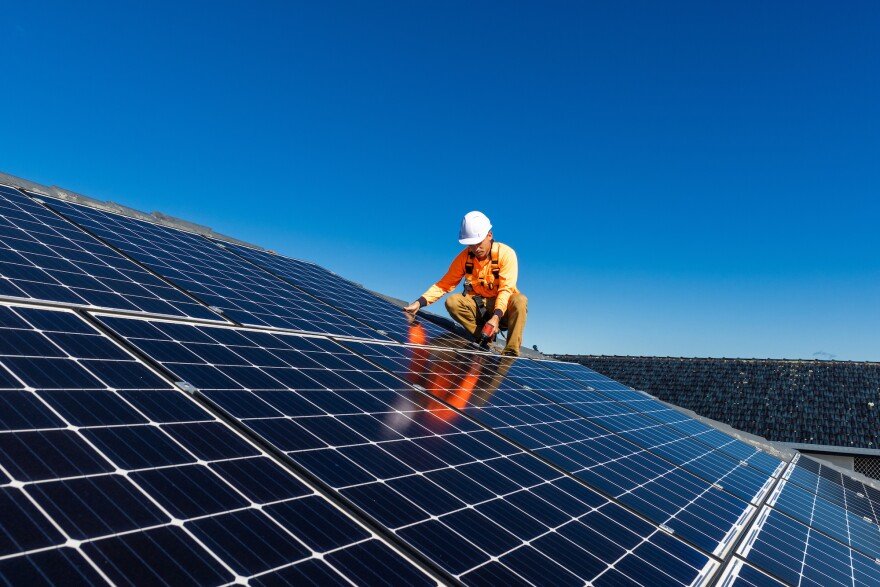Choosing the right solar energy system for your home can be a daunting task. Among the crucial decisions you’ll need to make is whether to go with an off-grid or grid-tied solar system. Both systems offer unique advantages and challenges, making it essential to understand their differences and determine which aligns best with your energy needs and lifestyle. This article will explore the key aspects of off-grid and grid-tied solar systems, providing insights to help you make an informed decision.
Understanding Solar Energy Systems
Solar energy systems harness sunlight to generate electricity, providing a sustainable and often cost-effective energy solution. These systems can be configured in two primary ways: off-grid and grid-tied.
- Off-Grid Systems: Also known as standalone systems, off-grid solar systems operate independently of the public electricity grid. They rely on solar panels, batteries, and sometimes backup generators to provide all the electricity a home needs.
- Grid-Tied Systems: Grid-tied systems, or grid-connected systems, are connected to the public electricity grid. They use solar panels to generate electricity but can draw from the grid when solar production is insufficient and sell excess energy back to the grid.
Key Components of Each System
Understanding the components of each system helps in grasping their functionality and suitability for different scenarios.
- Off-Grid Systems:
- Solar Panels: Capture sunlight and convert it into electricity.
- Batteries: Store excess energy produced during the day for use at night or during cloudy periods.
- Charge Controller: Regulates the flow of electricity into and out of the batteries to prevent overcharging and extend battery life.
- Inverter: Converts the direct current (DC) electricity generated by the solar panels into alternating current (AC) electricity used by household appliances.
- Grid-Tied Systems:
- Solar Panels: Capture sunlight and convert it into electricity.
- Inverter: Converts DC electricity from the panels to AC electricity.
- Net Metering System: Measures the amount of electricity fed into and drawn from the grid, allowing homeowners to earn credits for excess energy produced.
Advantages of Off-Grid Solar Systems
Off-grid solar systems offer several benefits that can make them an attractive option for certain homeowners.
- Energy Independence: Off-grid systems provide complete independence from the public electricity grid. This is ideal for remote locations or areas with unreliable grid access.
- No Utility Bills: Since off-grid systems don’t rely on the grid, homeowners avoid monthly utility bills, providing long-term savings.
- Environmental Impact: Off-grid systems can have a lower environmental impact as they don’t rely on fossil-fuel-powered grid electricity.
Challenges of Off-Grid Solar Systems
Despite their benefits, off-grid systems also come with significant challenges.
- Higher Initial Costs: Off-grid systems require batteries and additional components, increasing the initial setup cost.
- Energy Storage: Storing sufficient energy to cover periods without sunlight can be challenging and requires a sizable battery bank.
- Maintenance: Off-grid systems typically require more maintenance, particularly for battery upkeep and replacement.
Advantages of Grid-Tied Solar Systems
Grid-tied solar systems are the most common residential solar setup and offer numerous advantages.
- Lower Initial Costs: Grid-tied systems generally have lower initial costs since they don’t require batteries.
- Reliability: The grid acts as a backup, ensuring a constant power supply even when solar production is low.
- Net Metering: Homeowners can earn credits for excess energy produced, potentially reducing or eliminating electricity bills.
Challenges of Grid-Tied Solar Systems
While grid-tied systems are popular, they also have their drawbacks.
- Grid Dependence: Grid-tied systems depend on the public electricity grid, which means power outages will affect the home unless a backup battery or generator is installed.
- Utility Bills: While grid-tied systems can reduce utility bills, homeowners will still receive a bill, particularly if they consume more electricity than the system generates.
- Environmental Concerns: If the grid electricity is largely generated from fossil fuels, the overall environmental benefits of a grid-tied solar system may be reduced.
Personal Narrative: Making the Decision
When we decided to install solar panels on our home, the choice between off-grid and grid-tied systems was challenging. Living in a suburban area with reliable grid access, we initially leaned towards a grid-tied system due to its lower cost and ease of installation. However, the allure of energy independence and the desire to completely eliminate our reliance on fossil fuels made us consider the off-grid option.
After extensive research and consultations with solar experts, we opted for a grid-tied system with the possibility of adding battery storage in the future. This hybrid approach provided the best of both worlds: immediate cost savings and the potential for greater energy independence down the line.
Future-Proofing Your Solar Investment
As technology advances, the distinction between off-grid and grid-tied systems continues to blur. Innovations in battery storage and energy management systems are making it easier to achieve energy independence while remaining connected to the grid.
- Hybrid Systems: Combining grid-tied systems with battery storage offers a flexible solution that maximizes both reliability and energy independence.
- Smart Grids: The development of smart grids and advanced energy management systems allows for more efficient use of renewable energy, reducing the reliance on traditional power sources.
- Government Incentives: Continued government incentives and subsidies for solar energy and battery storage can make advanced systems more affordable and accessible.
Conclusion
Deciding between an off-grid and grid-tied solar system depends on various factors, including your location, energy needs, budget, and personal preferences. Off-grid systems offer complete energy independence and potential long-term savings but come with higher initial costs and maintenance requirements. Grid-tied systems provide lower upfront costs, reliability, and the financial benefits of net metering, but depend on the public electricity grid.
By carefully considering your unique circumstances and future-proofing your investment, you can choose the solar energy system that best meets your needs and helps you achieve your sustainability goals. Embrace the future of energy by making an informed decision and contributing to a greener planet.


